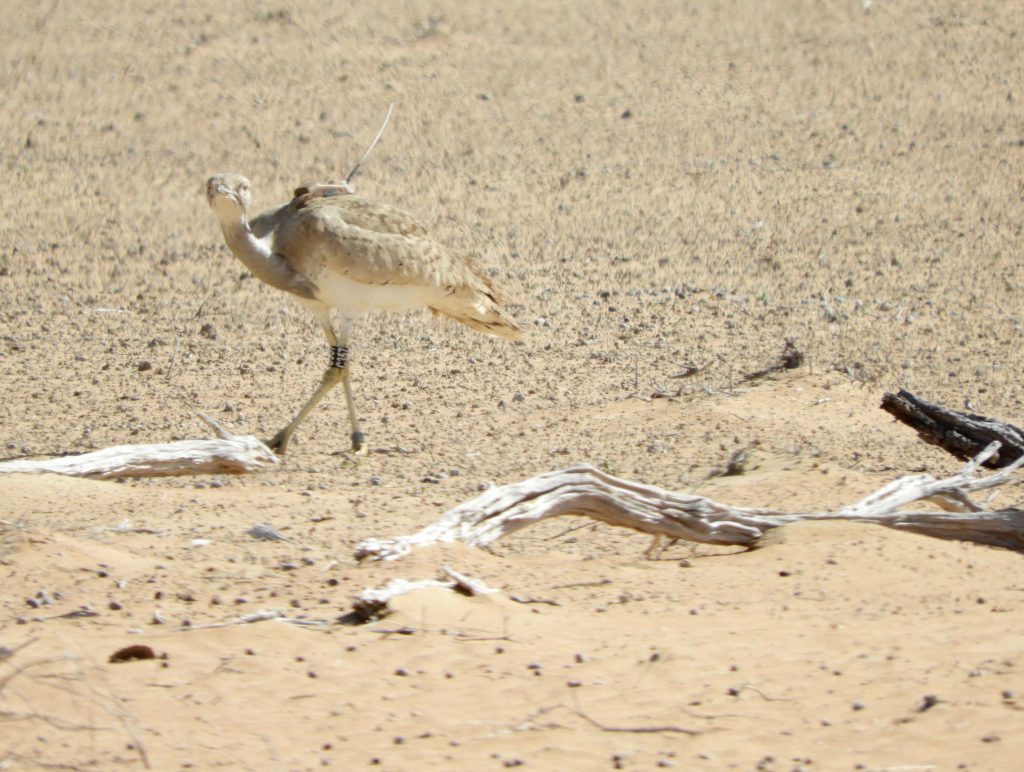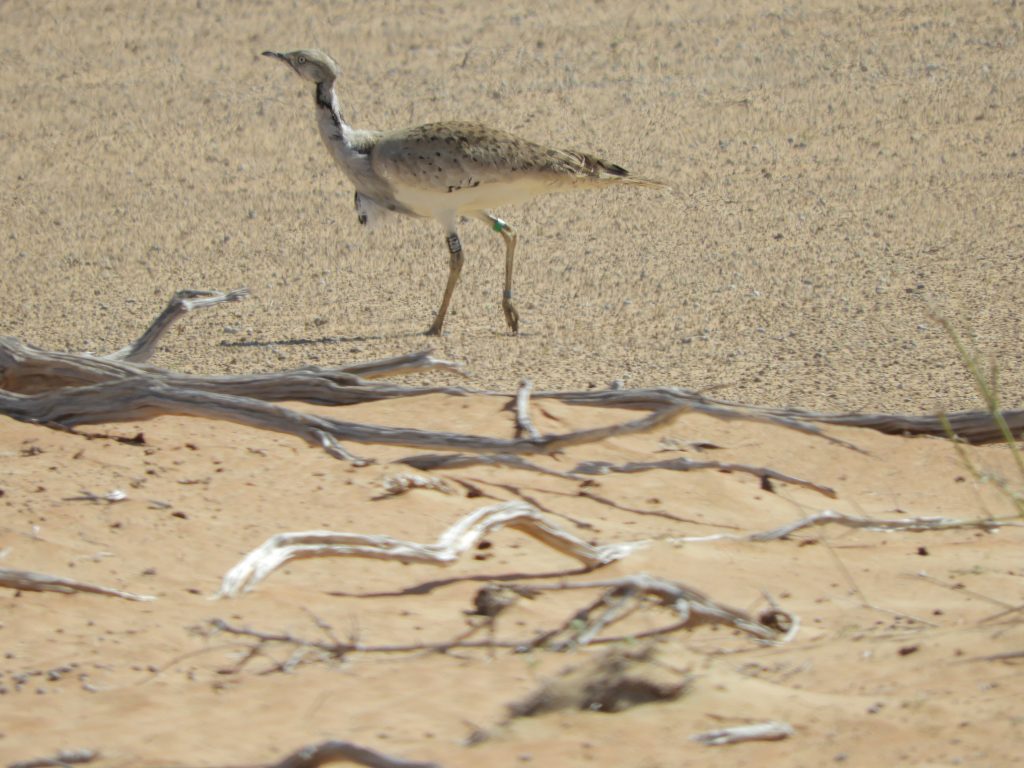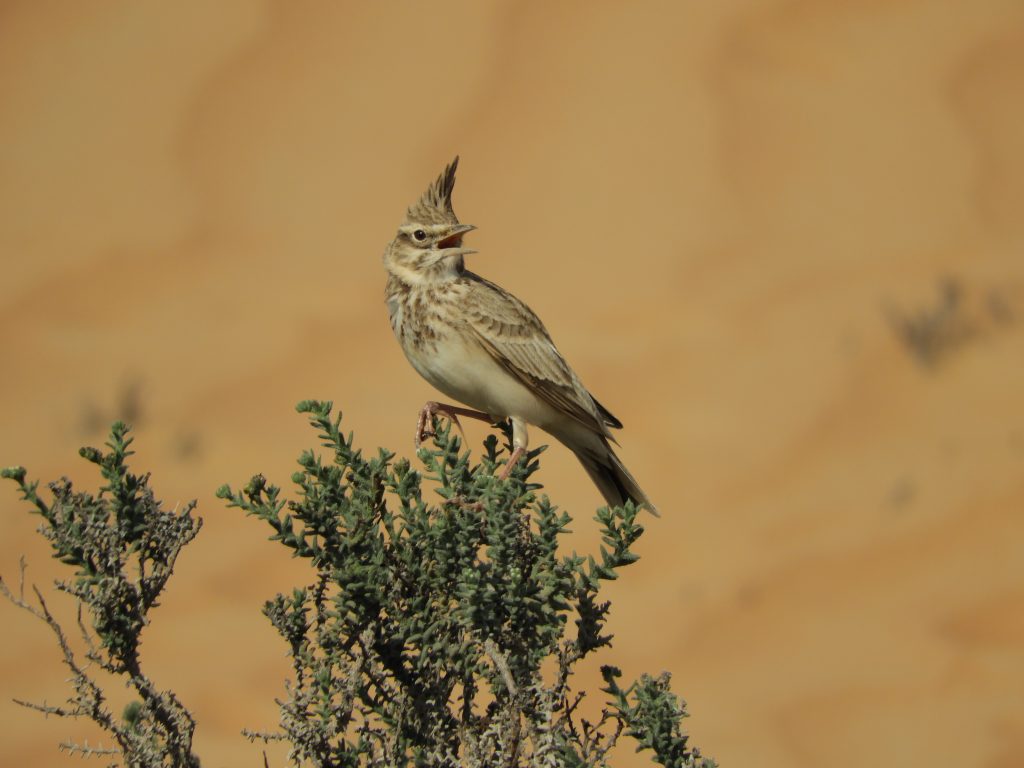
January 19 2020. Dubai Desert Conservation Reserve (DDCR). I am in the the Arabian Desert this week as one of a team of volunteers here to update the DDCR’s animal population estimates; simple really – counting animals in the sand. The team, about a dozen strong, is drawn from various countries and our common bond is an interest in wildlife and doing something useful with our time. Biosphere Expeditions makes it all possible.
Of course there’s more to it than casually wandering around with an “I see one!” approach to counting. In small groups we have been assigned a handful of 2km x 2km squares to survey. Point counts are part of it and Oryx, Arabian Gazelles and Sand Gazelles are the easy part, we also record other animals of interest including, to my delight, interesting birds.

Unsurprisingly, the desert is not a very birdy place but those that are here hold my attention. Today we recorded several Crested Larks, two Grey Francolins ( rather like a partridges), a fly-by Brown-winged Raven and best of all, two Macqueen’s Bustards.
Macqueen’s Bustards are tall birds, somewhere between a turkey and an ostrich and were, until recently, called Houbara Bustards. But those whose job it is to split hairs determined that Macqueen’s is a distinct species and now Houbaras are birds of North Africa only while Macqueen’s are Asian. Bustards of all stripes are one of those birds who, when I was a child, I knew only as pictures in a book, almost mythical and something I’d likely never see in my life. (The same goes for Citrine Wagtail, Bee-eaters, Hoopoe and Secretary Bird by the way, and that I have since met all of them is a comment on the ease of travel today, first world wealth and advancing years.)

plus antenna 
Today’s Macqueen’s Bustards were a minor sensation to me. They just paced past us, in no particular hurry, both had identifying leg bands and one sported a ten-centimetre long antenna on its back because it had been fitted with a satellite tracking device; the species has been reintroduced in the DDCR and is the subject of close study.

Like many of the animals we saw in the DDCR they are the colour of their habitat and vanish quickly if you blink.